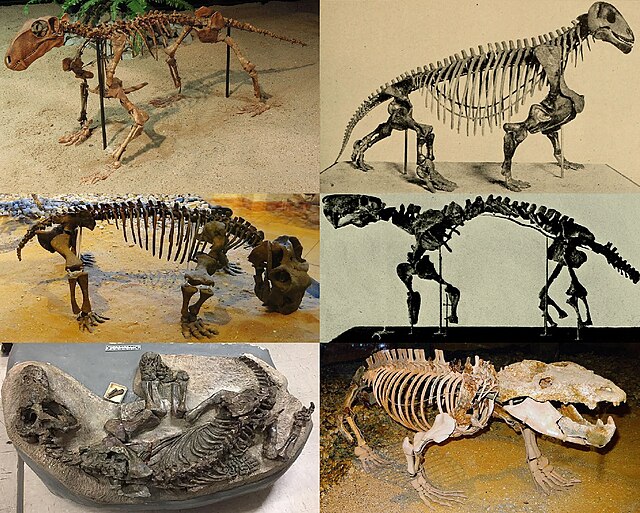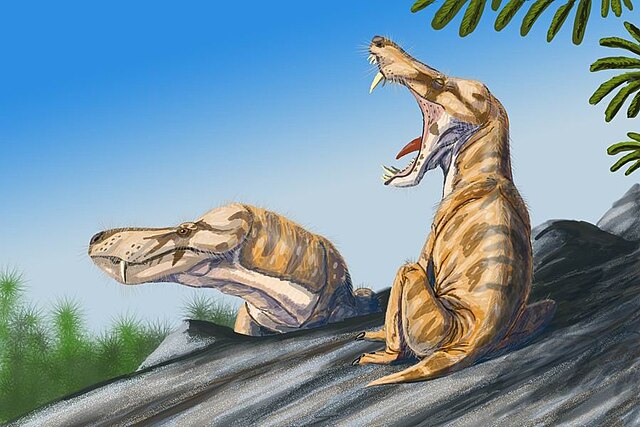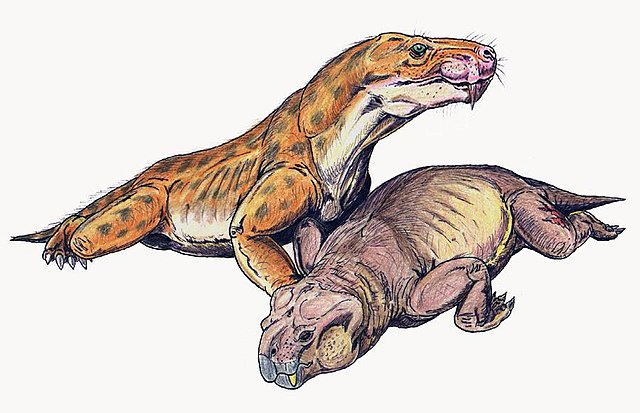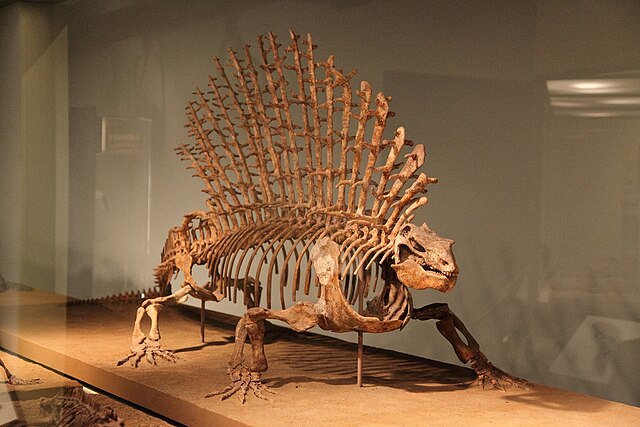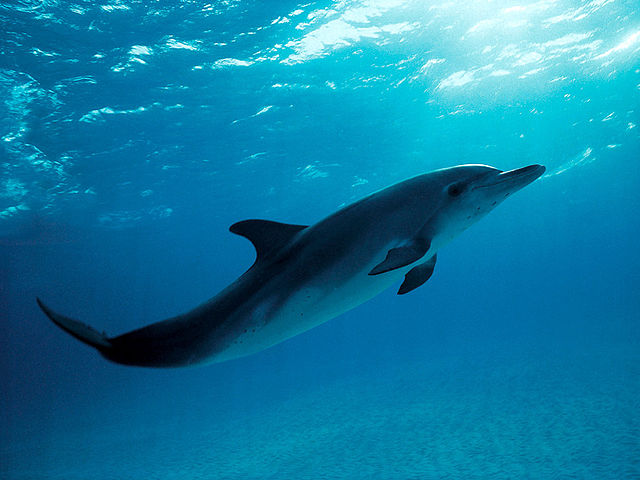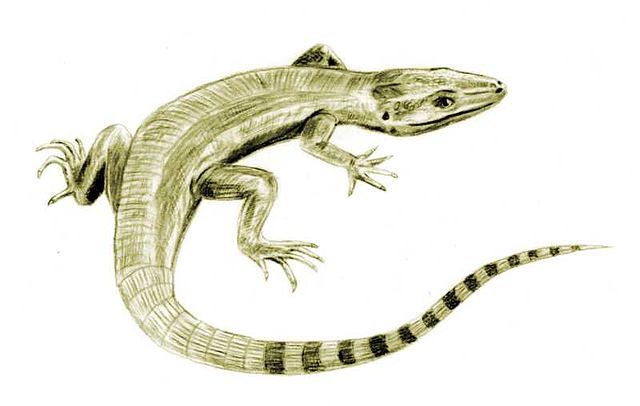Therapsida is a clade composing of a major group of eupelycosaurian synapsids that includes mammals and their ancestors and close relatives. Many of the traits today seen as unique to mammals had their origin within early therapsids, including limbs that were oriented more underneath the body, as opposed to the sprawling posture of many reptiles and salamanders.
Therapsida
Illustration of Alopecognathus, an early therocephalian therapsid
Holotype skull of Raranimus dashankouensis, the most basal known therapsid
Restoration of Euchambersia with dicynodont prey. Note that this South African therocephalian is suspected to be the oldest known venomous tetrapod.
Eupelycosauria is a large clade of animals characterized by the unique shape of their skull, encompassing all mammals and their closest extinct relatives. They first appeared 308 million years ago during the Early Pennsylvanian epoch, with the fossils of Echinerpeton and perhaps an even earlier genus, Protoclepsydrops, representing just one of the many stages in the evolution of mammals, in contrast to their earlier amniote ancestors.
Image: Edaphosaurus
Image: Dolphind
Archaeothyris belongs to the family Ophiacodontidae and appears in the Early Pennsylvanian

